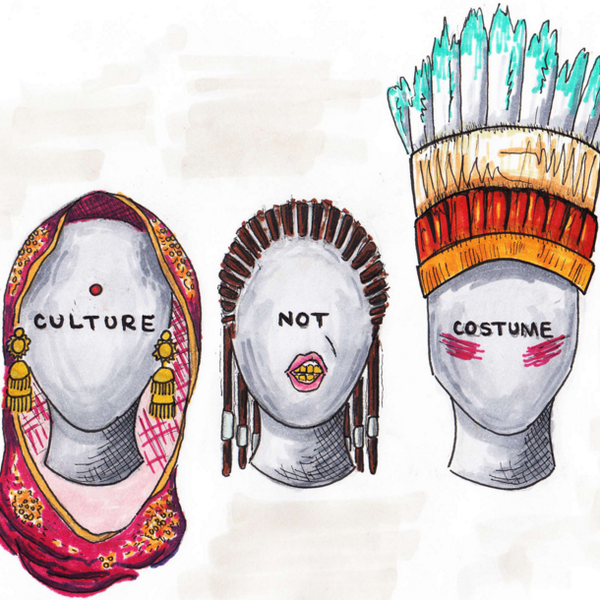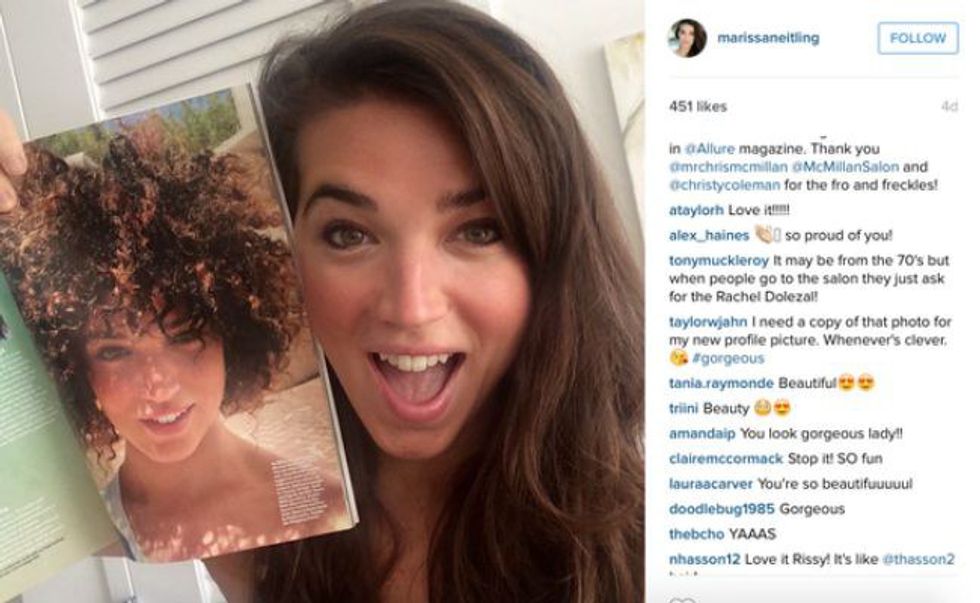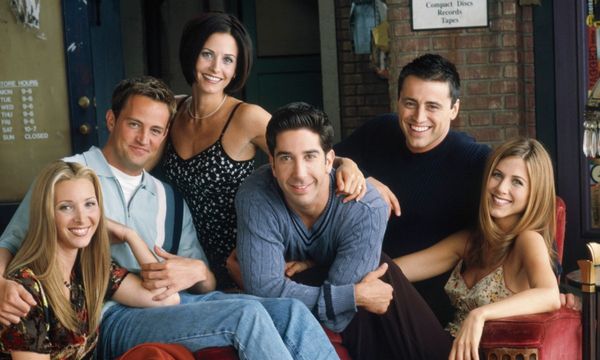Cultural appropriation is a very complicated and complex accusation to distinguish and topic to discuss. This is because of the alternative argument of cultural appreciation or inspiration. Take, for instance, the excuse the popular lingerie brand, Victoria’s Secret, used in 2012, when they displayed a Native American headdress at their annual fashion show, claiming that it was a harmless parade of costume not intended to offend. Specifically in the United States, though, there is no denying pervasive cultural appropriation when it comes to the aesthetic and performative practices of black culture in popular culture.
The framing of certain appropriated acts of black style and expression as trends within popular culture and within the music industry have deemed incredibly problematic to the maintaining of black identity in the United States. But this isn’t the first time that the cultural appropriation of black culture by white America has threatened a sense of black identity. Rather, appropriative acts like this have been in motion since the beginning of slavery through dance performance and music.
Some of the earliest appropriations of elements of black culture were in the sphere of jig-dance and challenge dancing during the 1840s to 1860s. Audiences would watch intently as slaves and their white-opponents would attempt to out-tap-dance the other. In these settings, white dancers performed tap and jig dance from the slave culture which both dance forms arose as a form of expression and mocked it through performances of blackface minstrelsy. Black-face performances consisted of white men mocking black existence through racial satire, caricature performance and the appropriation of black tap and jig dancing. By appropriating elements of black identity and dance by means of mockery and racism, white America had created one of the most economically prospering and popular entertainment pastimes to date (Mark Twain and Abraham Lincoln were notably huge fans of this practice).
Fast forward to the 20th Century, appropriation of black culture is still prominent specifically in the music industry but isn’t as overtly exploitative or racist as black-face performances. The blues was a distinctive music style in a black culture which communicated themes of black struggle and intense emotion. The white music industry repackaged this style of blues, jazz, and soul into what we know as “rock” between the 50s and 80s and gained immense popularity without any credit to any pulls of inspiration.
Artists who were the faces for this appropriation include Elvis Presley, Benny Goodman, Eric Clapton and the Beastie Boys. A more contemporary example of this would be within the hip-hip industry of today with artists like Iggy Azaelea, an Australian rapper with an acquired southern twang, and Macklemore, who both have flourished in the last few years, hitting #1 on Billboard charts and winning several awards for songs like “Fancy” and “Thrift Shop."
Macklemore specifically, at the 2014 Grammys won Best Rap Album, Best Rap Song, Best Rap Performance as well as Best New Artist, instead of other rappers and newcomers to the music scene like Kendrick Lamar. Black artists like Chance the Rapper, Azaelea Banks, and Nicki Minaj, have been outspoken about this commodification of hip-hop in white popular culture due to acquired and extremely selective economic success within this industry.
Other forms of dance that have been culturally appropriated by white figures of pop culture today are twerking seen in music videos of Taylor Swift and Miley Cyrus, where both women utilize black women as video props.
In favor of this appropriation of hip-hop and black culture, would be arguments of “color-blindness” as well as the shaky terms in which calling something culturally appropriated entails. But as people of color are constantly reminded every day with institutional racism and white supremacy, neither “colorblindness” nor the fabricated American facade of the “melting pot” actually exist.
The most concrete argument of the dangers of cultural appropriation of black culture though within white America today lie within aesthetics. Physical attributes common to women of color including big butts, plump lips, and curly hair, have become the latest "trends" in popular culture.
Specific hair styling techniques solely developed for the treatment of the hair of women of color, including corn rows, dreads, the lokai ponytail, and bantu knots, have also become styling “trends” within the fashion industry. These hair styles were named as "original, epic and edgy" in magazines and blogs such as Teen Vogue, Vogue, Allure, Maine Addicts (which went as far to claim that Guido Palau, the hair stylist of Marc Jacob’s spring and summer 2015 collection, invented “twisted mini-buns,” essentially the white version of bantu knots), and Marie Claire when publicly worn by white pop culture figures like the Kardashians, Miley Cyrus, and Katy Perry. When women of color have worn these very hair styles and sported their hair natural, though, they have not received the same acceptance or admiration.
When Zendaya wore dreads on the red carpet she was distastefully mocked on the judgmental fashion commentary show ‘The Fashion Police’ that she looked as if she smelled like “patchouli oil or weed." This example is something that emulates the double standard of beauty in popular culture between white women and black women. When worn by white women, these styles are hailed innovative but when worn by women of color they are ‘too ethnic’ and even unprofessional in work environments.
Some people, such as journalist Zipporah Gene, have extended this argument of the appropriation of African and Black culture to black people themselves in response to the sporting of African prints and tribal marks on the red carpet as well as at Afropunk, an annual festival glorifying and showcasing black culture and music. But this argument is highly implausible next to white-American appropriation as black people who identify with many cultures within the African diaspora cannot appropriate their OWN culture.
Its important to emphasize that cultural appropriation isn’t necessarily a “bad" thing and that it is a very complex subject as the line between appropriation and appreciation can be indistinct at times. What is for certain though, is that elements rooted within black culture, once frowned upon and oppressed against, are today being commodified by White-Hollywood and White America. Aesthetic practices of black people and women of color are now being labeled by the mainstream popular culture sphere as "edgy, original and urban" meanwhile completely disregarding where these very styles actually originated.
The justification of this appropriation with the “color blind” argument within areas of creative expression and of hip-hop culture becomes obsolete when immense economic capital flows back into the white artists that are themselves appropriating.
Someone is profiting off black aesthetic practices and it's not men and women of color. It's pop culture icons like Kylie Jenner, Miley Cyrus, Kim Kardashian and Katy Perry.
This is where cultural appropriation becomes incredibly destructive. This appropriating and fetishizing of black aesthetics and creative practices into “trends” and fashions blends black culture within popular culture. Not only does this process demean the significance that any of these practices have to black people, but, in turn, robs elements of black culture, absorbs them into representations of “whiteness” and dismantles a sense of black identity. It is no coincidence that popular culture mimics and has disguised within it the oppression and disregard for black culture and identity that has taken place throughout American history.
It is evident that white-participation in black culture today almost acts as a tourism, fetishizing in the participation of aesthetic and expressive elements while ignoring the societal and economic consequences that come with being black in America.
Contemporary American popular culture reflects how embedded racism, discrimination and white supremacy is within our societal construct. The separation of slaves from their African roots during slavery has taken on a more contemporary form within our capitalistic society in the form of exploitative cultural appropriation.























